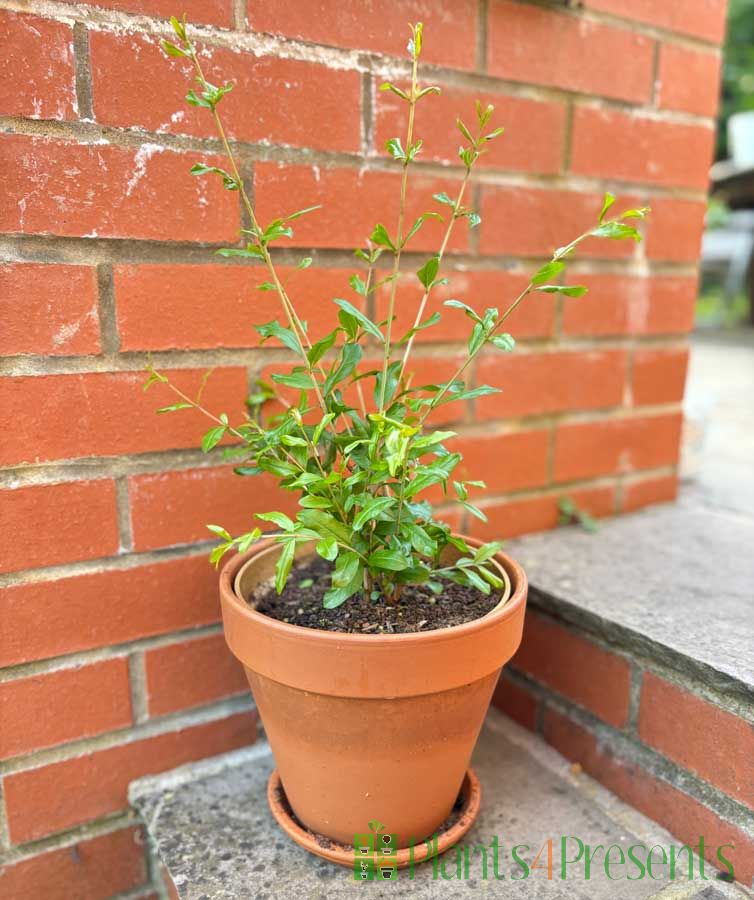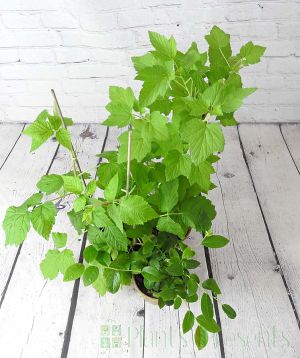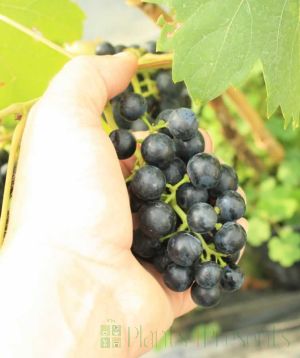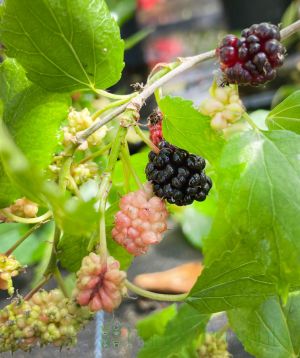Pomegranate
In stock


- Grow your own exotic pomegranates
- Suitable for a conservatory or warm spot in the garden
- Next or named delivery just £6
Pomegranates are deciduous and will soon drop their leaves for winter. Keep them frost free for the winter months and they'll reward with you with fresh new growth in Spring and dramatic orange flowers and fruits from July onwards.
A variety called 'Favorit' these 'punica granatum' pomegranates are nice bushy 3 year old plants with a neat shape but it won't be long now before they start to drop their leaves for winter.
 5/ 5
2 reviews
5/ 5
2 reviews


This was a gift, but the recipient tells me it's a lovely healthy plant.

A happy, healthy plant with good instructions and care advice.

These instructions are sent with the plant gift
The Pomegranate tree is originally from the Himalayas but it has been cultivated in the Mediterranean for thousands of years and does surprisingly well here in the UK. These bushy trees will put on a succession of pretty red flowers in the summer followed by tasty fruit.
Your Pomegranate plant will do best in a sunny spot in a conservatory or bright room. In the summer months it can go outside on a sheltered patio. When indoors make sure your pomegranate gets plenty of light, by putting it near a window but a little way back from the glass to avoid scorching.
Whilst your pomegranate is in a small pot you will need to water it regularly especially if in a warm spot. Aim to water it heavily and then allow the top of the compost to dry out before watering again. Over the summer months your pomegranate will benefit from a dose of general-purpose liquid feed every couple of waterings to help keep the foliage healthy and to set flowers.
A dwarf variety, your pomegranate will eventually reach a maximum height of 2m tall. They can be planted out in the garden after the first year but will crop better indoors as long as they get enough sunlight on the leaves. If you prefer to keep it in a pot it is a good idea to prune your plant back at the end of the summer and repot it next spring to keep it nice and bushy.
Problem Solving:
If the leaves start to turn a pale or mottled colour your plant needs more nutrients and will benefit from a good dose of general house plant or citrus feed every couple of waterings until it greens up again.
If during the summer months your plant doesn’t start flowering, or the buds drop before they open, it may not be getting enough sunlight so try moving to a sunny spot and hold back on any feeding until you see flower buds begin to develop.
This is the edible pomegranate grown for its flowers and fruits. It is deciduous so don’t be alarmed if it starts to lose its leaves in winter.











